2003
Type of resources
Available actions
Topics
Keywords
Contact for the resource
Provided by
Years
Formats
Representation types
Update frequencies
Scale
-
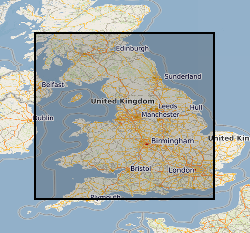
This dataset comprises data from Wessex Archaeology surveys which were conducted over various wreck sites between 2003 and 2010. Three of these datasets were acquired in English waters, one in Welsh waters and one in Scottish waters. The geology and geophysics component of the data are archived by British Geological Survey (BGS) in the Marine Environmental data and Information Network (MEDIN) Data Archive Centre (DAC) for Geology and Geophysics. The data include multibeam echosounder, single-beam echosounder, sidescan sonar, sub-bottom profiler, magnetometer, and geological data (vibrocore logs and photos). Data were also provided to other archive centres as appropriate - UKHO (bathymetry), Royal Commission Ancient and Historic Monuments Wales (geophysics), Royal Commission on the Ancient and Historical Monuments of Scotland (geophysics and diving/ROV), Archaeology Data Service (diving/ROV). Although generated for archaeological purposes, these high quality and resolution data are capable of re-use by marine surveyors and scientists from a range of different fields. Data are delivered via the BGS Offshore GeoIndex www.bgs.ac.uk/GeoIndex/offshore.htm and additional data are available on request enquiries@bgs.ac.uk.
-
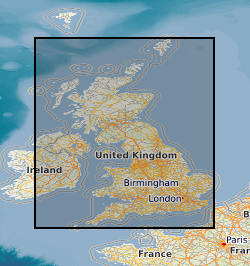
Data identifying landscape areas (shown as polygons) attributed with geological names and rock type descriptions. The scale of the data is 1:625 000, providing a simplified interpretation of the geology which may be used as a guide at a regional or national level, but should not be relied on for local geology. Onshore coverage is provided for all of England, Wales, Scotland, the Isle of Man and Northern Ireland. Superficial deposits are the youngest geological deposits formed during the most recent period of geological time, the Quaternary, which extends back about 2.58 million years from the present. They lie on top of older deposits or rocks referred to as bedrock. Superficial deposits were laid down by various natural processes such as action by ice, water, wind and weathering. As such, the deposits are denoted by their BGS Lexicon name, which classifies them on the basis of mode of origin (lithogenesis) with names such as, 'glacial deposits', 'river terrace deposits' or 'blown sand'; or on the basis of their composition such as 'peat'. Most of these superficial deposits are unconsolidated sediments such as gravel, sand, silt and clay. The digital data include attribution to identify each deposit type (in varying levels of detail) as described in the BGS Rock Classification Scheme (volume 4). The data are available in vector format (containing the geometry of each feature linked to a database record describing their attributes) as an OGC GeoPackage and are delivered free of charge under the terms of the Open Government Licence.
-

BGS LithoFrame models provide 3D geological characterisation for parts of the onshore and offshore UK at a range of scales. They present framework geological interpretation consistent with the stratigraphic framing schemes and scales used in BGS geological maps. Models have been constructed under a range of project activities and include local-scale superficial and bedrock models covering sites and focused study areas, medium-scale superficial and bedrock models covering many urban areas, transport corridors and smaller catchments, and regional-scale bedrock models covering large catchments, district areas, and geological basins. The 3D geological models have been constructed in a period between 2003 and 2018 and is managed by the 3D GeoModel project (National and International Geoscience).
-
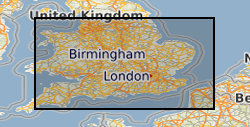
The Marine Aggregate Levy Sustainability Fund (MALSF) commissioned a series of Regional Environmental Characterisation (REC) surveys via the Marine Environment Protection Fund (MEPF) to develop understanding of submerged habitats and heritage in Britain. The aim was to acquire high quality data to enable broad scale characterisation of the seabed habitats, their biological communities and potential historic environment assets. The surveys were conducted in the following areas - Outer Bristol Chanel (2003 – 2005), Eastern English Channel (2005 – 2006), South Coast (2007 - 2010), Outer Thames (2007), East Coast (2008 - 2009), Humber (2008 - 2009). The Geology and Geophysics component of the data are archived by British Geological Survey (BGS) in the Marine Environmental data and Information Network (MEDIN) Data Archive Centre (DAC) for Geology and Geophysics. The data includes bathymetry, sidescan sonar, sub-bottom profiler, magnetometer, seabed video and photographs, Particle Size Analysis (PSA) data, vibrocore (logs and images). Data are delivered via the BGS Offshore GeoIndex www.bgs.ac.uk/GeoIndex/offshore.htm. Additional data are available on request enquiries@bgs.ac.uk. Other data types have been archived with the other MEDIN DACs as appropriate (UKHO DAC for bathymetry data and DASSH DAC for biological data). The MALSF ceased operation at the end of March 2011 (http://www.marinealsf.org.uk/).
-
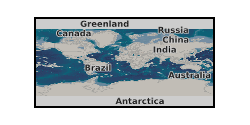
EU is required to reduce its CO2 emissions by 8% by 2008-2012, later deeper cuts are foreseen. CO2 underground storage is one of the few options that can meet these obligations. The present project investigates four new potential cases for CO2-reservoirs, mainly on land. It will continue reservoir simulations and study geochemical reactions to develop final-fate prediction models. This will be supported by new seismic observations. At the same time gravimetrics is introduced as a new method better suited on land. This proposal builds directly on the Thermie/5FP SACS2 project results, which involved monitoring and modelling the injection of CO2 into the Utsira Sand aquifer, at Sleipner gas field, offshore Norway.
-
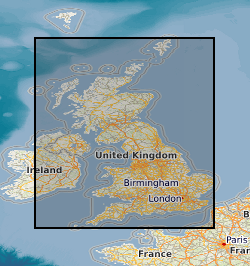
This dataset comprises scanned images of the manuscript geological maps produced by the Survey geologists or other recognised geologists on County Series (1:10560) and National Grid (1:10560 and 1:10000) Ordnance Survey base maps. The collection also includes similar maps compiled from other sources. Currently the dataset contains over 35,000 scanned images. Original maps date from the 1860s, and cover surveys in Great Britain, scanning started in 2003.
-

Spherical and rod-shaped structures of bacterial dimensions found on coalified Upper Silurian and Lower Devonian mesofossils including spores, cuticles and coprolites will be subjected to a number of techniques to determine whether they are biological and, if so, the timing of the colonisation (coeval, post Lower Devonian or Recent) of the plants. Techniques will involve imaging and analytical FESEM and SEM, TEM, removal of modern bacteria and simple incubation experiments with bacterial cultures. Such studies have much wider implications for the detection of bacteria in the history of life on Earth and other plants.
-
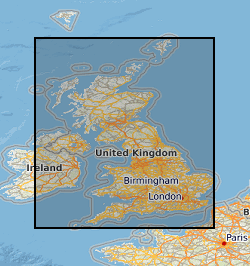
[This metadata record has been superseded, see http://data.bgs.ac.uk/id/dataHolding/13608195] Scanned images of Geological map 'Standards', manuscript and published maps produced by the Survey on County Series (1:10560) and National Grid (1:10560 & 1:10000) Ordnance Survey base maps. Current holdings over 41,000 maps for Great Britain. The majority of maps were scanned in 2004, any new maps produced are scanned and added to the collection.
-
The Sparsholt College-South Wonston water station radio links data describe signal levels of several links at a frequency of 56 Ghz, which covered a path of 5km from the South Wonston water tower near the A34 to Sparsholt College. The data were collected between October 2002 and April 2005. The radio link between Sparsholt college and the Wonston water tower is used to investigate the effects of rain and sleet on radio signals.
-
Data were collected by Chilbolton Facility for Atmospheric and Radio Research (CFARR) Raingauges from 1st of May 1995 to the present at Chilbolton, Hampshire. The dataset contains measurements of rainfall accumulation as measured by RAL Rapid Response Drop Counting rain gauges.
 NERC Data Catalogue Service
NERC Data Catalogue Service